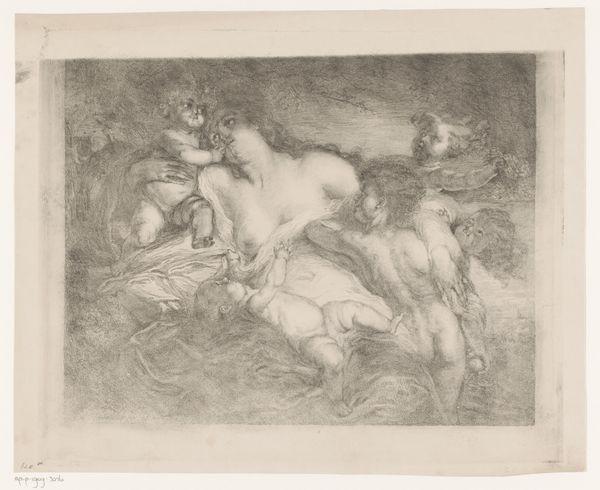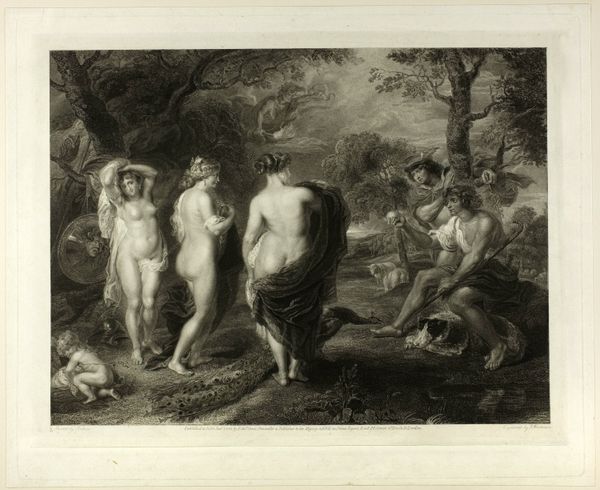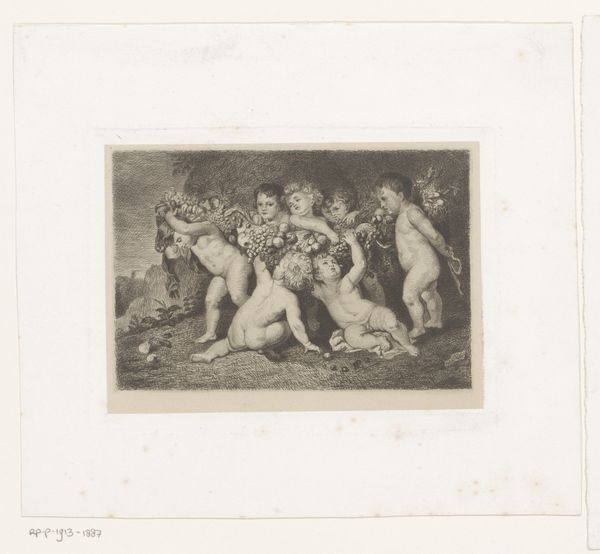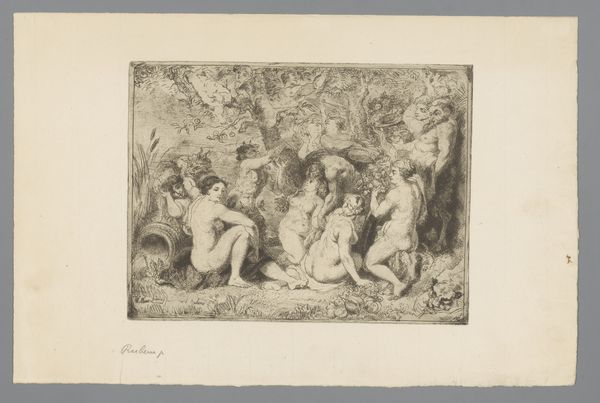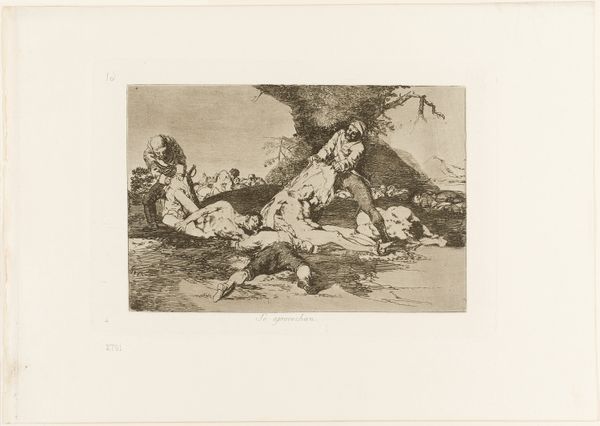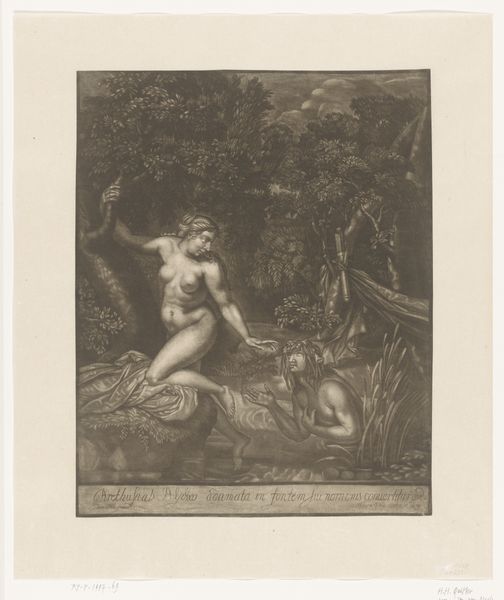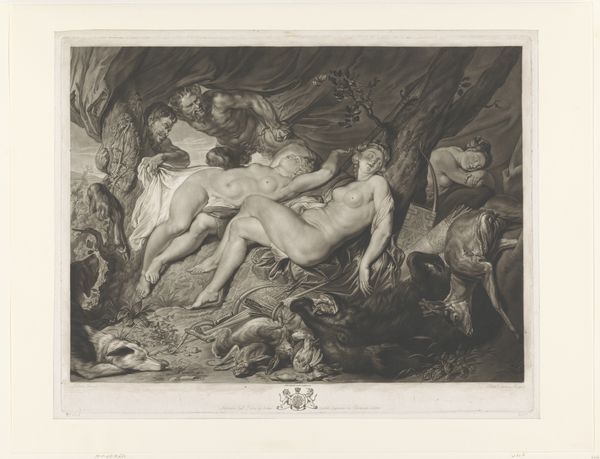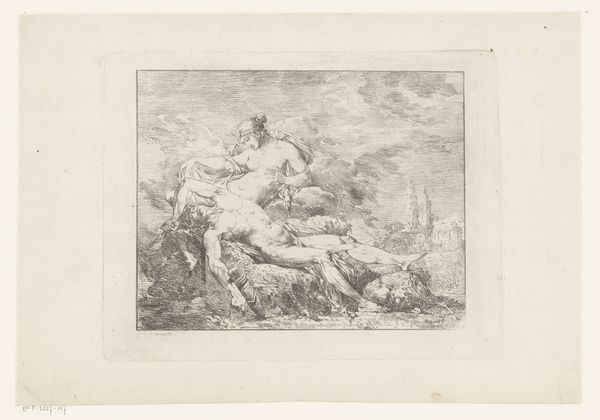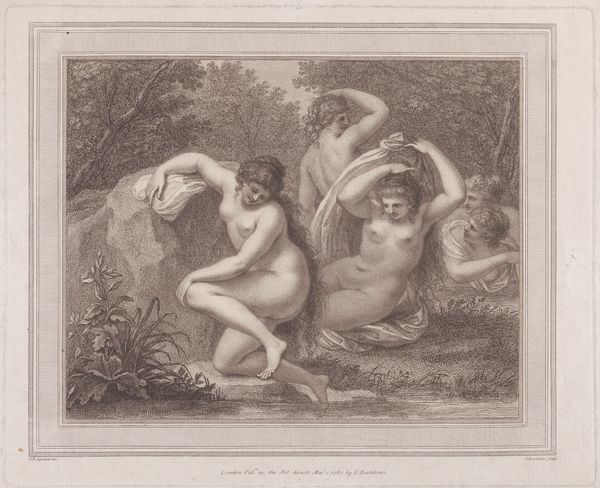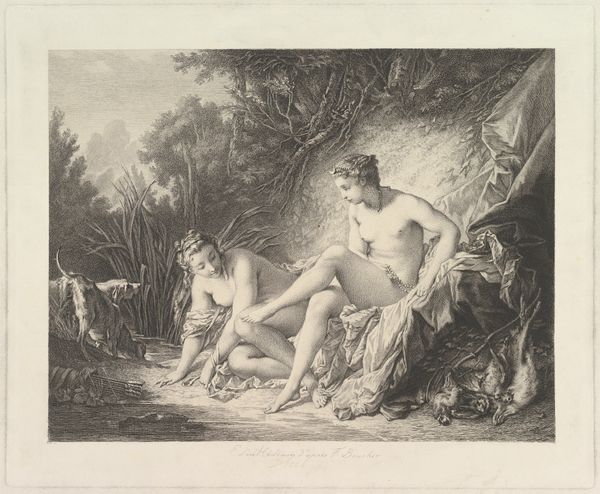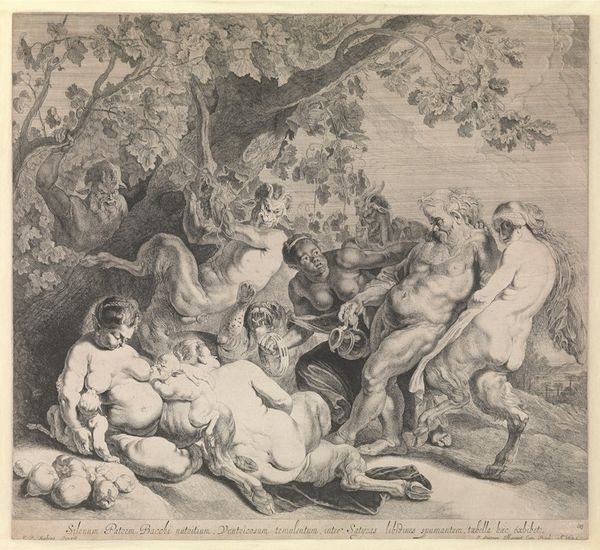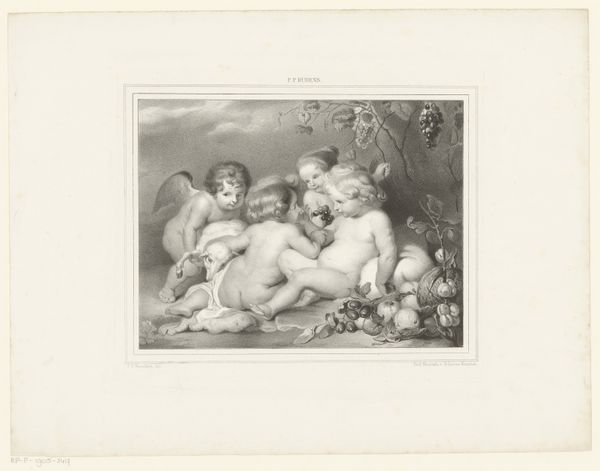
Dimensions: height 359 mm, width 460 mm
Copyright: Rijks Museum: Open Domain
Curator: Good afternoon. We are standing before Gustave Doré's 1862 engraving, "Sater bespiedt zes slapende nimfen in een bos," housed here at the Rijksmuseum. Its meticulous linework immediately draws the eye. Editor: It gives me the creeps, honestly! Like stepping into a dream where you know someone's watching but you can't quite see them. That grainy, dark forest—you can almost smell the damp earth and stagnant water. Curator: The engraving technique, creating stark contrasts between light and shadow, certainly contributes to that unsettling atmosphere. Note how the artist uses tonal gradations, manipulating depth and focus within the composition. Semiotically, the slumbering nymphs are vulnerable signifiers of beauty in repose, contrasting with the lurking, partially obscured satyr. Editor: It's a study in voyeurism, isn’t it? He’s literally 'othering' those women as they dream. The satyr peering from the dark, the nymphs exposed near water - it screams subconscious threat. It’s like, beauty has to be watched, doesn't it, has to be preyed upon. Makes you wonder about Doré’s own perspective here. Curator: That's a potent reading. Consider, however, the influence of Romanticism, prevalent at the time, and its fascination with classical mythology. The figures, whilst naked, exist within an allegorical framework, not strictly a naturalistic one. The oval shape containing the main illustration emphasizes this detachment from reality. Editor: Mmm, sure, art history explains context...but it can’t change feeling, can it? The choice of materials–the sharp lines of an engraving – contributes to that sense of uneasy distance. Curator: Indeed, the cold detachment. This forces a dialogue, rather than simply observing. Doré provides all the cues for the reading to take on this power, and imbues its aesthetic framework within these formal constraints. Editor: Power is an important theme. I almost wonder whether Doré included some commentary on its perversion within the work. I suppose, as always with impactful art, questions are what are left to ruminate upon! Curator: Precisely. Art asks questions; analysis endeavors to define their formulation. Doré's skillful composition forces just that. Thank you for your attention. Editor: Makes you question what's lurking in your own forest of the mind! See you later.
Comments
No comments
Be the first to comment and join the conversation on the ultimate creative platform.
